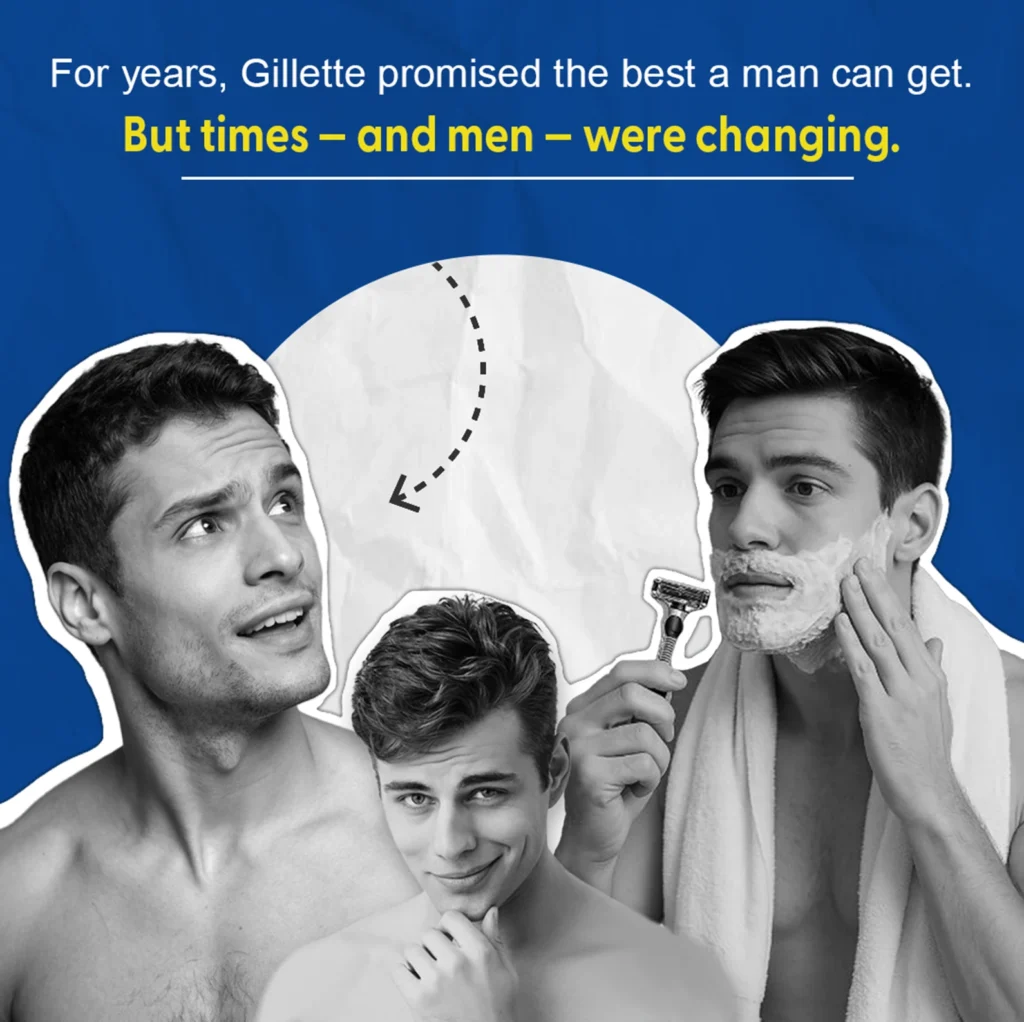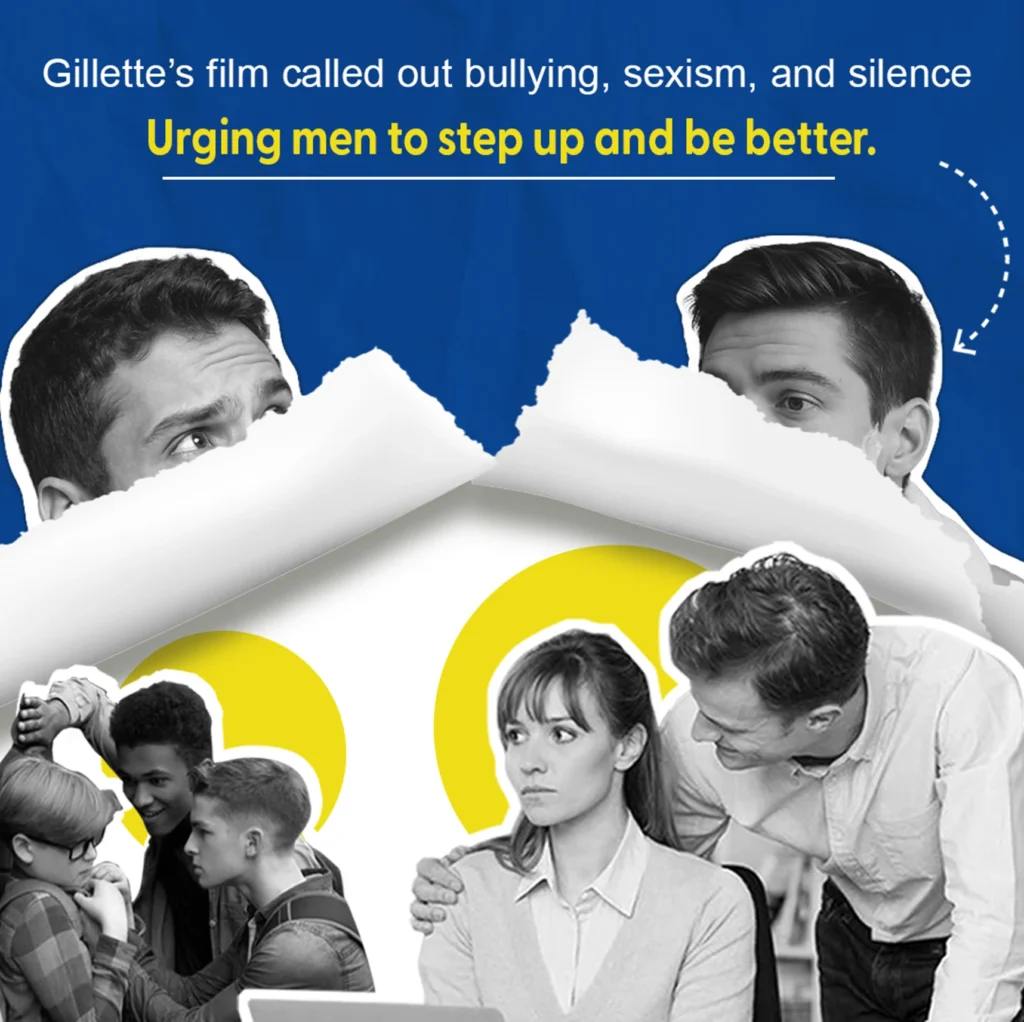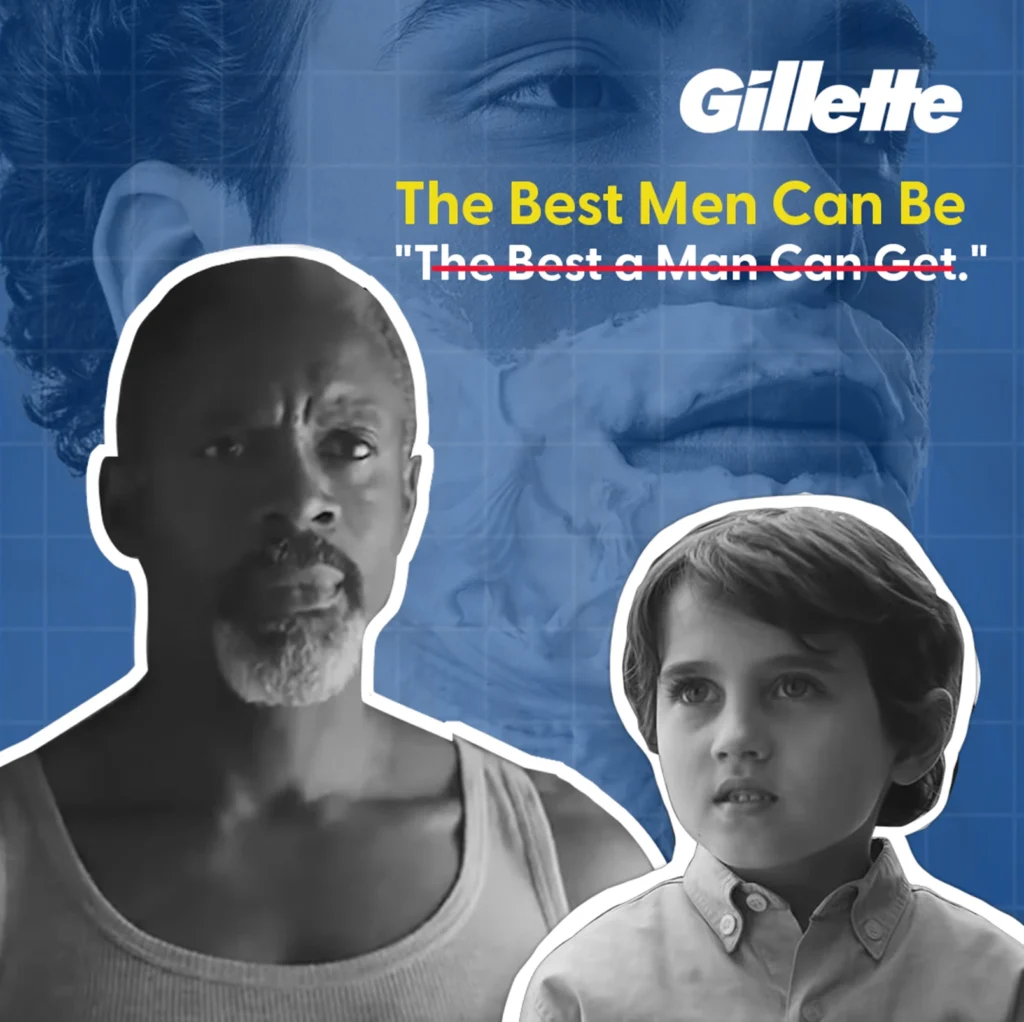
7 Aug 2025
Inside Gillette’s “The Best Men Can Be” Campaign: How Purpose-Driven Marketing Sparked Global Conversations
In January 2019, Gillette, a brand long synonymous with smooth shaves and traditional masculinity, introduced Gillette “The Best Men Can Be”, an ad campaign that went beyond marketing a product; it challenged its own legacy.
Gillette “The Best Men Can Be” was not just any advertisement. It was more like a confrontation, a brand-funded mirror reflecting toxic masculinity, corporate legacy, and culture at large. And it holds a lesson every brand strategist should study.
With the release of the daring, emotionally stirring short film, Gillette shifted from simply selling grooming tools to confronting a cultural construct. It overtly questioned the very construct of manhood, which they had, in part, helped to craft. This radical approach was unequivocally uncomfortable — and all the more memorable for it.
From a marketing standpoint, it wasn’t a mere pivot in storytelling. It was a brand repositioning strategy in response to a shifting social consciousness. Gillette wasn’t just following a trend; it was rewriting the rules of how legacy brands operate when the culture around them changes, demonstrating true purpose-driven marketing.
Masculinity in Crisis: How Culture Forces a Brand Repositioning Strategy

For generations, advertising had sold masculinity as a form of control — of oneself, of others, and of outcomes. Gillette’s 1989 slogan, “The Best a Man Can Get,” was in perfect harmony with this cultural narrative. It glorified the masculine ideal prescribed by society: successful, stoic, clean-shaven, always in control.
But by 2019, this archetype had started to crack.

The #MeToo movement didn’t just expose individual abuses but questioned the entire conditioning that allowed those abuses to go unchecked. Masculinity itself was under scrutiny — not in its existence, but in its framing.
Instead of pushing back against it, Gillette leaned in. Not only did it challenge antiquated gender norms, but it also admitted to its own complicity in upholding them. That’s not just rebranding — it’s brand accountability, a key pillar of values-driven marketing today. And such candor is rare to witness, especially in the realm of commercial storytelling, and serves as a core example of purpose-driven marketing today.
To explore another campaign that disrupted gender norms through understated yet impactful storytelling, read The Sharp Marketing Behind Ariel’s #ShareTheLoad campaign.
Linguistics as a Moral Turn: How One Word Sparked Gillette’s Brand Legacy Transformation

Most brands use a similar basic blueprint: define your identity, maintain consistency with it, and foster loyalty through familiarity. But Gillette upended this playbook with a purpose-driven marketing approach. It didn’t discard its tagline — it dismantled it.
By shifting from “get” to “be,” the campaign shifted masculinity from something you prove to something you embody. It no longer revolved around looking good, but being good—an infinitely more personal and challenging ask.
Linguistically, Gillette’s “The Best Men Can Be” is a signifier of moral responsibility, about internal integrity as opposed to external validation. It is in that linguistic nuance where the actual brand legacy transformation can be found. Gillette didn’t just blandly say “Buy our razors.” It said, “Rethink what it means to be a man — and we’ll do the same.”
When a Razor Brand Tackled Taboos through Purpose-Driven Marketing
This campaign mixed commercial storytelling with civic discourse. There are many brands that use social messaging to appear woke and socially conscious, but Gillette actually went in wholeheartedly with a purpose-driven marketing approach.
The ad did not rely on celebrity endorsers or overused tropes. It highlighted the difficult, uncomfortable conversations that society too often shies away from: bullying, harassment, toxic peer culture, and passive bystander behavior. These were not rhetorical metaphors used as gimmicks; they were actual lived realities that the ad business either glorified or willfully ignored.
Gillette did not posit itself as the moral high ground or savior. It positioned itself as a participant, one that would risk discomfort and welcome critique.
When brands take this route, they transcend traditional advertising. They create emotional utility, not just brand recall. And if done properly, this is content marketing at its finest: not an interruption, but a valuable contribution.
Cognitive Dissonance as Strategy: Risking Brand Loyalty to Build Legacy
From a behavioral psychology lens, the brilliance of this campaign lies in its use of cognitive dissonance, a tactic that reinforced Gillette’s brand repositioning strategy.
For men who encountered the ad, they were being asked to reckon with two realities:
- The Gillettes were like a symbol of traditional masculinity
- Now Gillette wanted them to put a little thought into how they categorized themselves.
That friction brought focus. It made people uncomfortable. But in a crowded ecosystem of overexposed, underwhelming content, unease can be a kind of differentiation.
Yes, the backlash was swift; some consumers boycotted the company. But others found themselves not just as buyers, but as human beings. They weren’t just buying a razor — they were buying into an idea. That’s how customers become brand advocates.
Woke or Real? Gillette’s Commitment Beyond the Camera
So many “woke” campaigns collapse under the weight of their own insincerity. They issue bold declarations and quietly return to business as usual.
The campaign extended to real-world deeds as well — it made a $1 million-per-year commitment to nonprofit organizations focusing on men and boys.
While the message was uncomfortable, it wasn’t empty of meaning. It was also backed by fundamental changes, including partnerships, structural adjustments, and a long-term brand repositioning strategy.
If you want to have a look at other campaigns that couple purpose with action, Whisper’s ‘Keep Girls in School’ did just that, fighting stigma through real initiatives that helped keep girls in classrooms.
Digital Marketing Lessons From Gillette “The Best Men Can Be” : Timing, Truth, and Tension
Many brands that want to participate in social conversations are afraid of backlash. Gillette walked into it willingly. The message alone wasn’t what made the campaign work. It was the context in which it landed:
- Timing: It entered into the conversation when roles were changing for men around the world
- Truth: Instead of preaching, it confessed past Missteps.
- Tension: It chose polarisation over passivity—knowing full well that provocation often breeds memory.
For marketing agencies, this means one crucial thing: campaigns are no longer simply moments; they are memory-making machines. And brand memory is built through tension that is personal, not promotional.
Why Gillette’s “The Best Men Can Be” Campaign Still Matters Today
Gillette’s “The Best Men Can Be” is still controversial years later — and that’s what makes it work. The reason for this is that it wasn’t engineered to trend, but rather designed to last for decades.
Gillette’s genius was that it didn’t abandon its past, but dialogued with it. It reclaimed a tagline that was born out of seeking external validation and directed it inward. It redefined the idea of what it means to be “the best,” from the bathroom mirror to the boardroom.
And that — not likes, not shares, not sales spikes — is what brand leadership looks like in an era where purpose must be proven, not performed.
If this struck a chord, Heineken’s Worlds Apart is another campaign that leaned into discomfort — and made unease unforgettable.
Also Read:- What Is GPT Bot, and Should You Block It? A Rational, Strategic Guide for Site Owners
FAQs on Gillette’s “The Best Men Can Be” Campaign
How did Gillette change its brand image with “The Best Men Can Be” campaign?
Gillette employed a brand repositioning strategy to challenge traditional masculinity and acknowledge its own past role in perpetuating outdated norms. By leaning into cultural conversations instead of avoiding them, the campaign became a prime example of purpose-driven marketing that aligned the brand with modern values.
Why did Gillette change its branding in 2019?
Gillette changed its branding in 2019 because traditional ideas of masculinity were being questioned. Advertising had long portrayed men as stoic, in control, and always successful, but movements like #MeToo exposed the flaws in these stereotypes. The Gillette “The Best Men Can Be” campaign directly addressed these issues, challenged outdated gender norms, and showed brand accountability.
Why did Gillette change their slogan?
Gillette didn’t discard its old tagline — it dismantled it. By shifting from “The Best a Man Can Get” to “The Best Men Can Be”, the brand redefined masculinity from something you prove to something you embody. This linguistic shift signaled a shift in moral responsibility and marked a true transformation in brand legacy.
What are the marketing lessons from Gillette’s “The Best Men Can Be” campaign?
Gillette’s campaign offers three key digital marketing lessons every brand can learn from:
–Timing: It entered into the conversation when roles were changing for men around the world.
–Truth: Instead of preaching, it confessed past missteps.
–Tension: It chose polarisation over passivity—knowing full well that provocation often breeds memory.
How did Gillette use behavioral psychology in marketing?
Gillette applied behavioral psychology through cognitive dissonance in its “The Best Men Can Be” campaign. The brand challenged men to confront the gap between traditional masculine ideals it once promoted and the new, more accountable definition of manhood. This discomfort made the campaign more memorable, sparking debate and turning buyers into advocates rather than just customers.
Leave a Reply
Your email address will not be published. Required fields are marked *












Comments